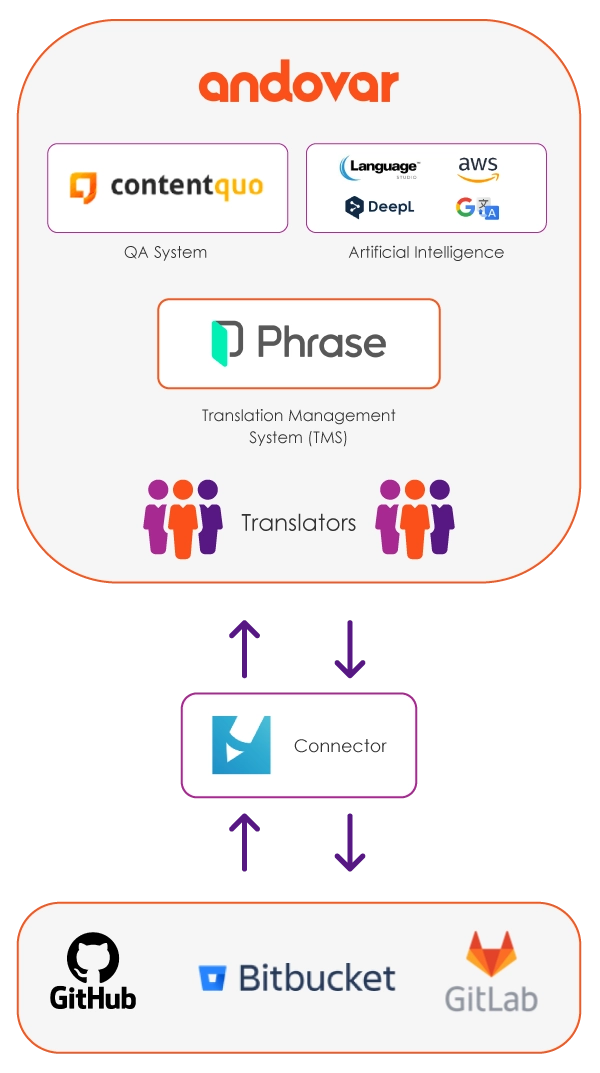Continuous Localization Services
For sectors that demand speed above all else, continuous localization by Andovar enhances your agile development and distribution across the globe.
Consultation
Intro
Advantages of Continuous Localization
Andovar provides technology-enhanced enterprise translation services and solutions to companies across multiple industries in over 200 language pairs. Helping multinational enterprises stay ahead of the competition in international markets, our automated systems and workflows accelerate multilingual content delivery across enterprise-wide operations with quality, speed and scalability.

You do not have to wait for your development to finish for us to begin translation, which then takes time to review and correct before it is integrated into your product and released to your customers. Workflow automation plus human expertise for editing and review accelerates your time to market.
By relying on such resources as AI-powered translation, in-built terminology tools, Translation Memory, and the Memsource cloud-based Translation Management System (TMS), which boasts artificial intelligence, we only translate the same content once. We can then reuse the content as needed to save both money and time.
When your need for continuous localization grows, so does our ability to fulfill it. Andovar can tap our network of over 10,000 professional translators from six offices around the world. We can assign several specialists to your project, so they can all translate your large volume of content at the same time. If you have several development teams scattered around the world, we can assign a separate localization team to each, often in the same location as your employees.
If your project reaches customers in China, Spain, and France, you do not have to wait for the Chinese translation to finish before starting on the Spanish version, and then the French. Different Andovar teams can work in different languages at the same time.
To be successful, continuous localization depends on a great deal of automation for both the software and development teams. The automation workflow goes like this:
1. The developers work on their software in their native language. New code with strings that require translation goes into a code repository, such as GitHub.
2. The repository recognizes any changed content that requires translation and pushes it to the TMS.
3. Our professional translators localize and review the content on the TMS.
4. The localized content merges into the code repository where it integrates into the code.
5. The integrated code goes to the server for distribution to the customer.
By integrating localization into your continuous software delivery, your engineers do not have to worry about constantly implementing, testing, and reviewing the translations. This repetition increases the chances of errors. They only have to do the process once at the beginning and then forget about it.










